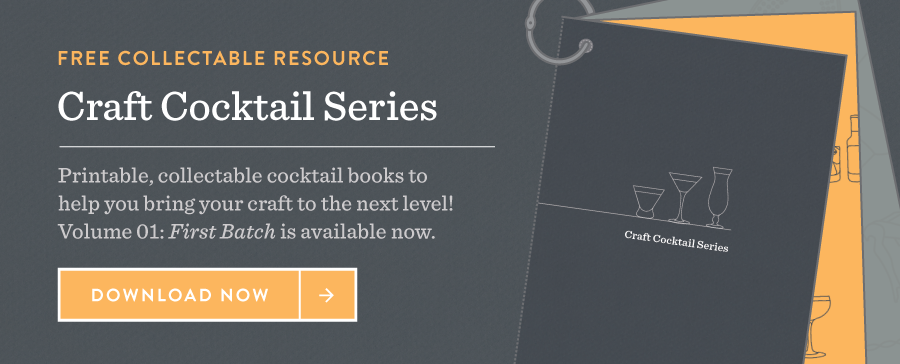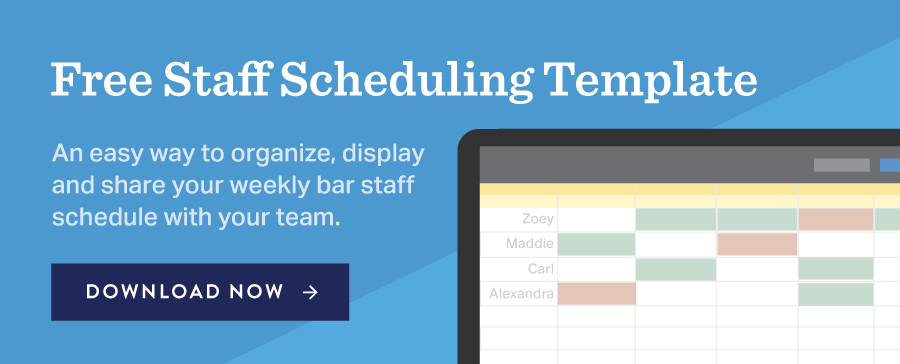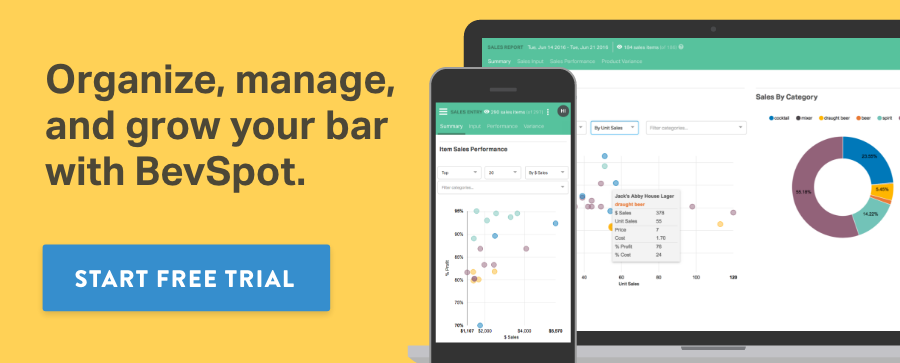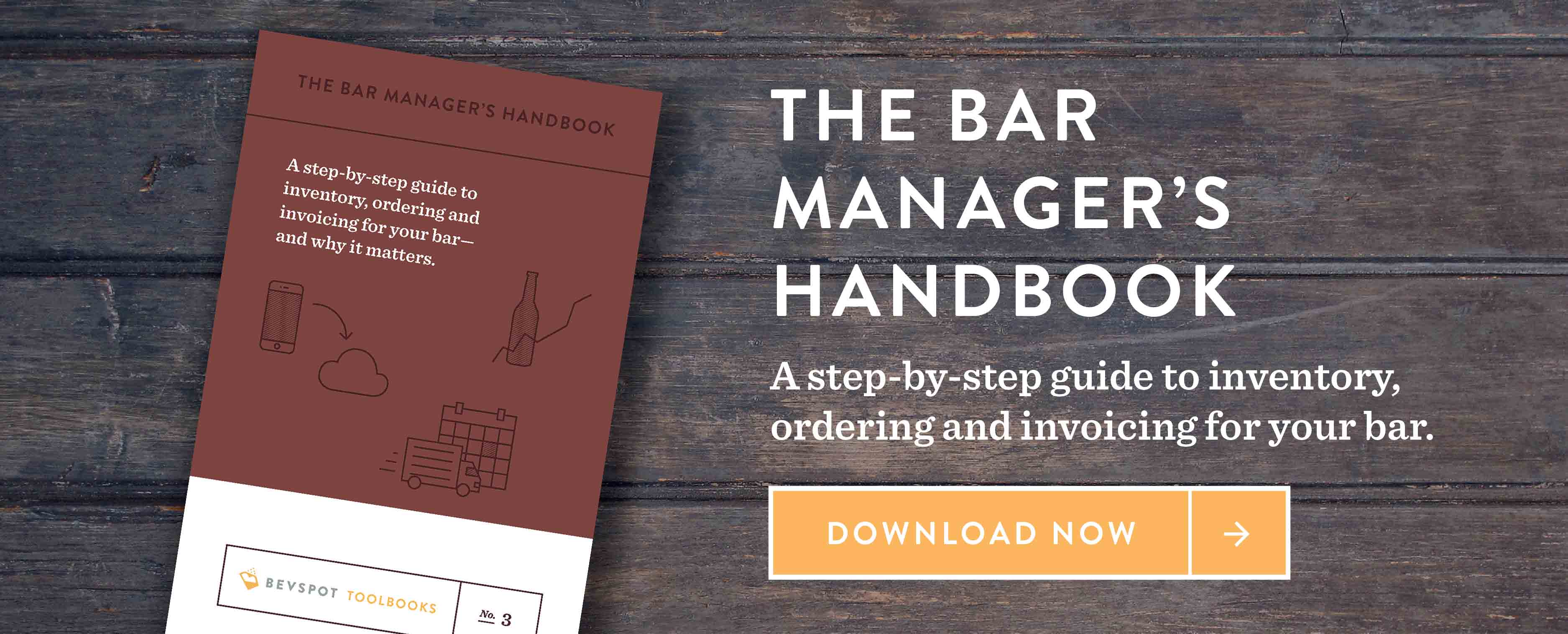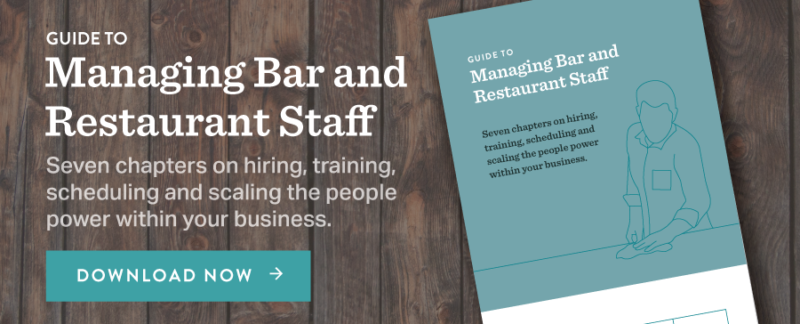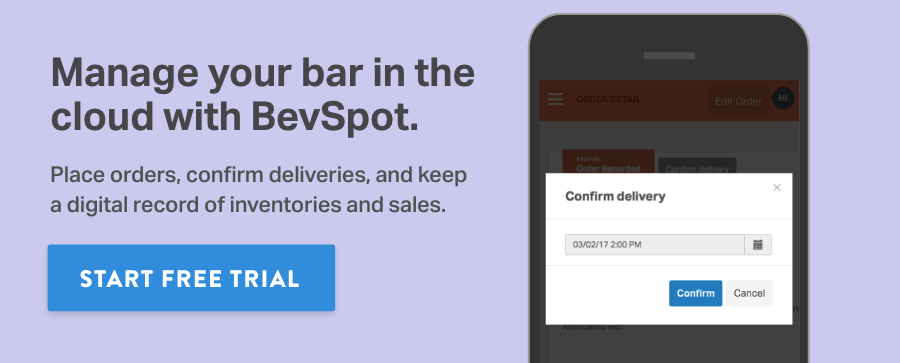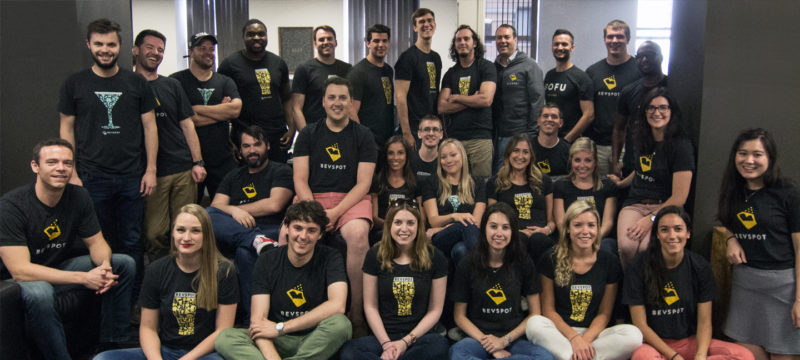Customer Stories: The Brewer’s Cabinet
The Brewer’s Cabinet is a small batch brewery and restaurant nestled at the foot of the Sierra Nevada, in Reno.
It’s a concept designed to push the boundaries of craft beer beyond popular trends and industry norms, a place for the team to experiment with different styles, ingredients and flavors.
Derrick is the General Manager of The Brewer’s Cabinet.
“We brew our own beer, and we have 14 handles at any given time that rotate through the different beers we make. We also distribute some of our beer locally, in cans, but only a few labels. Most of the beer is distributed here, at the brewery.”
In addition to creating their own beers, they also run a series of collaborative projects, feature beers from local breweries and run a small onsite kitchen that offers a fresh, local menu.
When he first opened the space, Chris, Owner of The Brewer’s Cabinet, was having trouble keeping an accurate record of his beverage inventory. He wanted to make the process faster and find a way to keep track of usage and variance more accurately. Looking for more details on his bar’s data, he assigned his new General Manager, Derrick, the task of implementing a new system—BevSpot.
Now, Chris uses BevSpot for high level numbers—such as pour costs, variance and inventory usage—and Derrick uses it to take inventory and do the bar’s ordering.
Here at BevSpot, The Brewer’s Cabinet is one of the Customer Success Team’s favorite accounts. They have great accuracy with their inventory and ordering through BevSpot, and they’re quick to correct any errors that our team points out.
The feeling is mutual.
“The BevSpot team has been really helpful. Erie [his account manager] has been great. He always answers my questions really quickly,” says Derrick.
Looking back on how his establishment previously did inventory and tracked their bar’s data, Derrick is happy with the powerful insights he can now see with BevSpot.
“BevSpot gives us a really specific idea of where we’re at. It gives our team a much better idea of how much product we’re going through, our variance, and other critical numbers like that.”
Find out what else Derrick said about running a beverage program with BevSpot.
Guide to Bulk vs. Lean Ordering For Your Bar
Guide to Bulk vs. Lean Ordering For Your Bar
Ordering product should be a careful, well-thought-out process.
It’s important to contemplate how much money you want to spend, how much product you want to order, which product to order, what categories you want to focus on, and how many weeks your purchased product will represent.
When deciding between bulk ordering (purchasing a large amount of product, often based on quantity discounts) and lean ordering (purchasing a small amount of product to reduce sitting inventory), there is no right or wrong answer. Instead, you should consider the benefits and applications of each ordering style, and determine which is best to use in each situation.
To help with your decision process, we made you a guide that explains the pros and cons of each ordering style. If you’re looking for a printable version to pin up in your storeroom, we’ve provided one at the end of this post.
MONETARY ADVANTAGES
If cash availability is not a concern, you can be more flexible.
If you aren’t worried about cash flow constraints, you won’t have to worry about spending frugally in order to pay for operation expenses or to save for other investments. More available cash means more flexibility to buy a greater amount of product without worrying about tying up cash.
Bulk ordering allows for discounts.
To incentivize businesses to buy in bulk, distributors often charge breakage fees if you purchase less than a case of product, and they offer promotions and discounts if you place a large order. For example, if you order five cases of Grey Goose, you might get the sixth one free, or if you do a twenty-case drop between Amstel and Heineken, any case you order for the rest of the month might be four dollars off. Taking advantage of deals like these will help you lower your beverage costs and increase your profits, as these savings flow directly to your profitability on each drink sold.
Consider the size of the discount.
You might receive a discount for ordering in bulk, but you should take a closer look at the size of the discount. If you order six cases just because the distributor is going to throw in an extra bottle, it’s probably not worth the investment, especially if six cases represents over three weeks worth of your inventory. Consider the value of the discount. Is it substantial? Does it benefit your particular establishment?
Order lean to conserve limited or seasonal cash flow.
If your spending is limited, consider ordering lean to avoid tying up your cash. An unnecessary amount of sitting inventory will make your cash unavailable for other important business expenses, such as rent, payroll, taxes and bills. Also, by ordering less product, you’ll have more flexibility to invest your cash elsewhere, such as in projects, equipment and marketing. Although inventory is an important investment, sometimes cash can be more useful if it’s in your pocket rather than sitting on your shelves.
PRODUCT CONSIDERATIONS
Confidently order stable products.
If you’ve previously ordered a product and you have the historical data to prove it will sell, consider ordering a larger amount. Ordering in bulk can help keep your costs down because of distributor specials and discounts. Proven products also pose less risk of getting stuck on the shelves of your storage room.
You’re less likely to run out of product.
If you order in bulk, it’s less likely you’ll run out of product. Customers have increasingly high expectations and they certainly don’t like being told you’re out of a product they want to order. If you buy in bulk, you’ll consistently have enough inventory to avoid 86’ing products.
Limit the risk of unproven products.
To limit the risk of new products failing to sell, you can order a smaller amount to experiment with. This way, if the product doesn’t sell well, you won’t have a large amount of sitting inventory to deal with. If it ends up being popular, you can order it in bulk the next time you place an order.
Free up space for other uses.
This might seem obvious, but when you order products, you have to account for physical space. The amount of storage space you have will limit the amount of sitting inventory you can have. If you have a smaller establishment, you’ll need a lean inventory in order to fit your product. By ordering lean, you also might be able to free up more space for retail displays, customer space, etc.
It’s a better method for ordering product that expires or loses freshness.
Not all products last forever. When you order products with an expiration date, such as IPAs and hard cider, consider ordering less product. If you order too much product and don’t go through it by its ‘Enjoy By’ date, you’ll be throwing away money as you pour expired product down the drain.
THEFT, LOSS AND BREAKAGE
If you bulk order, you’ll have a backup supply if products are damaged or stolen.
If you order a product in bulk, when a bottle breaks, you’ll likely have another bottle to replace it. With a cushion of extra product, you can worry less about 86’ing products due to spilled product, broken bottles and theft.
Less product means less risk of theft, loss and breakage.
You probably don’t walk around with hundreds of dollars in your wallet. You know if it’s on you, your cash has a higher chance of being lost or stolen. You can think about your sitting inventory in the same way. The bottles on your shelves represent a substantial cash investment. If you purchase less product, there’s less product than can potentially be broken, stolen or spilled.
DISTRIBUTER BENEFITS
Bulk orders can yield more positive distributor relationships and buying power.
Distributor representatives like when bars order in bulk—it helps their business and they get more commission. So, if you regularly place large orders, it will help to build a positive relationship with your reps and increase your chances of receiving limited product, exclusive deals, more buyback opportunities, giveaways, etc.
Distributor buyback programs can reduce risk.
If your distributor has a buyback program, you can order in bulk with more confidence. Distributors often offer to repurchase items to expedite the sale or mitigate concerns. Usually, buybacks exist under set conditions or for a set period of time. When ordering, make sure you’re aware of the certain terms of your distributor’s buyback so you can consider it as a potential option.
EFFECTS ON INVENTORY
Decrease the time it takes to count bottles during inventory.
As you know, bar inventory can take a while, especially if you have a large sitting inventory to count. It’s simple: the less product you order, the less bottles you have to count at the end of the night and the less time it will take to complete.
Timothy Gallant, the Dining Room Captain at Black Rock Country Club, explains how by using BevSpot, he was able to reduce his sitting inventory and significantly cut down the time it took to count it.
“BevSpot streamlined our inventory process and made it a whole lot easier. I can now do our entire club in the course of four hours, when it used to take me two days!”
Consider inventory from a weeks standpoint.
When you order product, you should think about how many weeks worth of usage your order amounts for. Calculating weeks’ worth of inventory is a great method for determining inventory efficiency and providing significantly more context to your inventory numbers. It’s recommended that you aim to stock about 2-3 weeks of sitting inventory. When you go to place a order, think about how many weeks’ worth you’re purchasing. The more weeks, the more risk and the more unnecessary cash tied up.
As you can see, there’s a lot to consider when choosing between bulk and lean ordering. It’s important to approach each decision as a unique situation or ordering opportunity, and always consider the benefits and applications of each ordering style.
These kinds of beverage management tasks can be pretty complex, which is why we created BevSpot —to make things more simple.
But, if you still need a little extra help behind the bar, schedule a free chat with one of our bar profitability experts. We’ll take a look at your beverage program, we’ll understand how it works, and then we’ll show you what you can do to run a better bar. All in one, free 10-minute call.
Download BevSpot’s Bulk vs. Lean Ordering pocket guide.
Like what you’ve read?
Get our printable version to take this information on the go.
GET THE FREE GUIDE
Now that you’ve fine-tuned your ordering strategy, see how BevSpot can help streamline the way you order product.
Schedule 15mins to chat with a product specialist
Start a FREE Trial Today! BevSpot offers full product education and account setup for all customers! No card Information needed!
Best Staff Scheduling Practices For Bar Managers
This post was contributed by Homebase, a free employee management solution for the restaurant industry. Homebase allows your entire team to stay connected through cloud-based shift scheduling and time tracking. Find them here.
Managing a bar can be an extremely stressful job, whether you’re new or a seasoned professional.
Not only do you need to have a hand in everything, from inventory to staff training, but you also have to be prepared to act as a walking customer service advocate when things go sour. One of the best ways to ensure things run smoothly on your watch is to make smart staff scheduling decisions. Here are some tips that can help save you stress and aggravation on those long, busy nights.
Schedule Your Staff Members According to Their Strengths
Do you have a friendly but somewhat scatterbrained waiter on staff? What about a bartender who knows how to whip up a mean cocktail but perpetually fails to muster a smile? While your staff members may be starting off with a limited skill set, over time, they’re likely to learn the ropes and up their game. Until then, take advantage of your staff members’ respective strengths and schedule them for the times they’ll be most effective.
For example, if you have a bartender who’s friendly and eager but painfully slow, give him the Monday night shift, and put Mr. Unfriendly Bartender, who pours drinks at lightning speed, front and center on Friday and Saturday nights. Have a super-efficient barback who really knows his stuff? Throw him into the mix during weekday happy hours, when your place tends to be buzzing. You’ve got plenty of time to help your staff members improve, so for now, do what you need to do to keep things moving.
Assign Tasks for Each Shift
Before your staffers show up for a shift, they should know exactly what’s expected of them. When you set your schedule, assign specific tasks for each shift so there’s no confusion as to who’s doing what. For example, have those working the opening shift set up tables and chairs and prep your garnishes, and have your closing staff be responsible for refrigerating all open mixes and juices and rearranging your top shelf liquor display. You can divvy up these tasks as you see fit, but the key is to assign them by shift and do so in advance.
Implement Performance-Based Scheduling
Most of your staffers would probably rather work a weekend than a weeknight since there’s more opportunity for tips. To avoid being accused of playing favorites, create a performance-based schedule where those who do their jobs well get those coveted shifts, and those who slack get stuck working Mondays and afternoons. Not only is this fair for employees, it’ll be good for your customers and your establishment.
Publish Staff Schedules in Advance
Your staffers have lives, too, so the earlier you give them their work schedules, the better they can plan. Rather than wait till the week before to post your work schedule, present this information weeks in advance. This way, if someone has a conflict, you’ll have plenty of time to shift things around or find a replacement. Scheduling in advance also shows your staffers that you value their time and aren’t looking to catch them off guard with any surprises, and if all goes well, they’ll return the favor by showing up on time and as expected. (Besides, they won’t really have an excuse not to.)
Managing a bar can be tricky work, but if you’re smart about scheduling, you can do your part to ensure you don’t run into too many snags. And with any luck, your staff members will appreciate the effort you’re putting in and step up to help further your efforts.
For more advice on managing a bar, subscribe to the blog, below.
Schedule 15mins to chat with a product specialist
Start a FREE Trial Today! BevSpot offers full product education and account setup for all customers! No card Information needed!
Spirit Spotlight: Hibiki 12 Year
BevSpot reviews Japanese whisky with a bottle of Hibiki 12 Year.
Japanese whisky (or whiskey as it’s known in the States) is a recent trend that has been emerging in bars across the country. But, is it right for your establishment? Learn more about the history of the Japanese whisky movement and one of their marquee products as the BevSpot team samples Suntory’s Hibiki 12 Year.
Spirit: Hibiki 12 Year
Distiller: Suntory (Osaka, Japan)
ABV: 43%
Category: Japanese whisky, blended whisky
Fun Facts:
– Hibiki means “echo” in Japanese
– It’s aged in umeshu or plum wine/liquor casks
Background
The movement of distilling whisky in Japan was born from the passion of two people: Shinjiro Torii—who founded Kotobukiya, which would eventually evolve into the present-day Suntory—and Masataka Taketsuru—who studied Scottish distilling techniques while at the University of Glasgow and would go on to found another award-winning Japanese distillery, Nikka.
Originally seen as an inferior version of Scotch whisky, it wasn’t until the early 2000’s that the popularity of Japanese whisky exploded worldwide and Japanese whiskies and distilleries started to consistently win international awards year after year.
The Hibiki series (Harmony, 12, 17, 21 and 30 Year) of Suntory’s Japanese blended whisky continues Suntory’s legacy of world renown and award-winning high-end whisky. The 12 Year has been recognized as the best in its category for multiple years, in the International Spirits Challenge as well as the San Francisco World Spirits Competition.
Tasting Notes
The blend is made up of Suntory’s Yamazaki and Hakushu malt whisky, as well as their Chita grain whiskey. It’s an incredibly balanced and smooth sip, especially for a blended whisky. The unique aging process helps to accentuate the delicate sweetness and fruit notes you get throughout the spirit. Recommended neat or perhaps with an ice ball for warm summer days. It can be great as a solo beverage or when paired with a dish featuring red meat like wagyu.
The BevSpot Team’s Personal Takes

“Vanilla and cherry, almost medicinal. Very smooth.”

“Nice vanilla and woody flavor. Great fresh finish.”

“I am a novice whiskey drinker, but this one was sweet when it hits the tongue then burns a bit, leaving a very warm feeling in the throat. Can definitely see where the plum wine barrels come into play, though.”

“It’s very sweet, with honey notes, vanilla.”

“Toffee, green apple up front… gentle heat and light smoke on the finish. Overall pretty thin body, reminds me of Oban 14 with a bit more punch to it.”
What are your thoughts on Japanese whisky or Hibiki 12 Year? Let us know in the comments section. And subscribe to our blog below for more content on spirits and bar management tools.
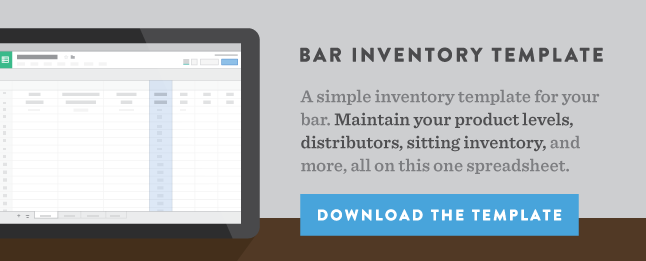
3 Reasons Why Your Bar Staff Isn’t Selling
Sales—you need them.
As a bar owner or manager, you can offer your guests the best food and beverage in your market, but if your bar staff can’t sell it well, your business won’t last long against the competition.
As hospitality professionals, we need to come to realize that we’re all in sales. Nothing moves in our economy until something is sold.
The restaurant and bar industry can be a particular challenge because most of the product you deal with is perishable. It’s not like you’re sitting on an inventory of merchandise like t-shirts—yours is likely to spoil by next month. So, time is certainly an issue when it comes to managing bar inventory and getting product out the door.
Knowing this, how can you put the odds in your favor and take steps to make sure your bar staff are supporting a profitable bar? Here are three reasons why your team might not be making the sales you keep asking them to make.
1. They don’t have their own reason why.
Human psychology is fascinating. It baffles our senses when people do things that—on the surface—seem bizarre, weird or even crazy. But those crazy acts all come with the same question…why?
The real driver of human behavior is this: People do things for their own reasons, not for yours. You can tell your team every day to mention that feature and try to move that case of Cabernet Sauvignon sitting in your wine room that you bought too many cases of (yes, we know it was a good deal). But the reasons you’re pushing this product are yours.
Now, some staff members will comply. Others might even mention it to their first few tables, and in the end you’ll sell a few bottles. But if you want to help your bar staff sell more, the first step is to help them discover their own reasoning. That means involving them in the process to give them some ownership in the process. Hold pre-shift meetings to explain and taste the featured products. Open up conversations with the team, and ask what they think.
“You know, this Cabernet we’re featuring tonight has a slightly more robust finish than our house Cab does. What item on our menu would you recommend it with?” Ask for input from all staff who want to contribute, and encourage them to uncover their own reasons.
2. They haven’t been trained how to sell.
There is a classic industry story of a restaurant CEO and his CFO chatting in an elevator.
The CFO says, “What if we spend all this money to train our bar staff and they leave?
The CEO replies, “What if we don’t train them and they stay?”
Training is always a worthy investment. Consistent training is what separates the great restaurants from the mediocre. How you train your team is how they will perform. And you cannot expect to have outstanding service or food without practiced staff.
You have to look at your team like a world champion sports team—they don’t just practice at pre-season and that’s it. It’s amazing that most restaurants and bars have the same short-lived training program only when the person is first hired. The typical three-day session is how most are trained. Then we’re shocked when they don’t meet expectations.
The best professionals in this industry make learning and growing a priority. They’re constantly reading, doing research and refining their craft. If you think you can become great with only 30-40 hours of work each week, you’re kidding yourself. Most of that time you’re simply dealing with the daily operational grind; few hours are directed at self-improvement.
Encourage your team to learn. Give them books and share links to bar industry articles or blog posts. Feed their curiosity and you’ll develop a team that will start to become addicted to knowledge.
Will everyone jump on this “learning train”? Of course not. That’s why it’s important to understand the last reason that pulls all this together.
3. You’ve hired the wrong people.
Understand this: You cannot turn a lamb into a lion. That might sound harsh, but at its very essence, it’s true. It’s hard to take someone who is shy and scared to talk to people and turn them into an outgoing service team member. This is not to say it can’t be done, or that this staff member is not valuable in other ways. But like in reason number one, if they’re not right for the role, they need to have their own reason to want to change. You can keep encouraging the team member to “get out there,” but the look on their face usually tells the real story.
One way to change this is to use behavioral surveys to put people in positions that play to their strengths. There are some great ones on the market like DiSC and ProScan that measure the four cornerstone behavioral traits that each and every one of us has (just in different combinations, which leads to individuality).
- Dominance: When a person places emphasis on accomplishing results, the bottom line, confidence. The leadership trait.
- Extroversion/Influence: When a person places emphasis on influencing or persuading others, openness, relationships. The people trait.
- Pace/Steadiness: When a person places emphasis on cooperation, sincerity, dependability. The patience trait.
- Conformity/Conscientiousness: When a person places emphasis on quality and accuracy, expertise, competency. The systems trait.
When trying to place new people within your team, in a position that would play better to their natural strengths, personality traits are a big factor. On a football team, there are many people who want to be the quarterback, yet very few have the skills and natural strengths to excel at that position. The same goes for your team—while the majority of people can adapt and do most jobs, only people whose natural strengths are aligned with their role will become top performers.
People excel when they play to their strengths. Your business will excel when you plug people in to the right positions, develop a culture of learning, and help them discover their own reasons of understanding why things need to be done. When you do all three, you’ll hit the trifecta and soon start to see your sales really soar.
Schedule 15mins to chat with a product specialist
Start a FREE Trial Today! BevSpot offers full product education and account setup for all customers! No card Information needed!
How to Train Your Bar Staff
Would you like a shaken Manhattan?
Or perhaps a White Russian made with your best gin? For the bars without a robust staff program beyond a bartender’s initial basic training, your guests might be suffering through these gaffes, or maybe even worse.
In order to save yourself, your guests and your establishment from these embarrassing mistakes, it is vital for your bar to have training and education platforms in place to keep your bartenders informed and accountable. But how do you know what is right for your bar?
Let’s take a look at some of the standard industry tools for staff education and training. Here are 4 ways to train your bartenders and bar staff.
1. Drink Bibles
An inherent element of the beverage culture is that there are endless variations on even the most classic of cocktails. For example, when you Google the recipe for a Manhattan, the first four results are all slightly different from one another. Is it ½ oz or 1 oz of sweet vermouth? Is it 1 dash, 2 dashes or 5 dashes of bitters? These are the variations your bartenders will probably randomly draw from if they are unfamiliar with a cocktail.
Some might argue that these small differences in recipe would be largely unnoticeable by the average guest. But, inviting your bartenders to create inconsistency in your guests’ experience is a classic recipe for disaster. A common industry method to eliminate this possibility is generating a drink or cocktail bible for your establishment that covers detailed recipes for not only the cocktails on your menu, but also any cocktail your guest might ask for outside of it.
If creating a consistent bar experience is a goal for your establishment, a drink bible will keep your bartenders responsible for sticking to the right recipes for your bar.
2. Pre-Service Meetings
It can be easy to solely frame pre-service around a quick and easy agenda of what to expect from the upcoming service as well as running through any 86’s and any current food or drink specials. But, the best establishments will often also dedicate a portion of pre-service toward continuing their staff education.
For bar managers, that might entail something like picking a sample from what you offer, whether it be a beer, wine, cocktail or spirit, and explaining its origin and significance to your staff. For your experienced and well-versed team members, this might be an undesired refresher course. But, for the less knowledgeable, it can provide a newly gained understanding of what exactly your establishment offers for your guests.
If you’re prideful of your menu’s offerings, pre-service is an opportunity to fully channel your pride throughout your entire staff.
3. Staff Tastings
A common part of the education portion of pre-service, and sometimes held in their own individual sessions, is an organized staff tasting. Serving product to your team members that could just as well go to a buying guest might appear counter-intuitive toward profitability. However, this practice has more long-term value to your team and the culture of your bar. The investment you’re making with tastings benefits your employees’ ability to confidently and accurately sell the product to your guests.
Directly instilling into the minds of your team members what your beverages taste like and why they taste the way they do can lead to much more organic and engaging descriptions that will provide a rewarding satisfaction for your more curious patrons.
4. Written Quizzes
Utilizing quizzes in your bar program can be a point of contention among bar managers. There is a certain fear and discomfort that comes with forced written tests that could generate added stress in your working environment, especially if continued employment is conditional upon passing.
However, if your goal is to establish a higher standard of service and knowledge, frequent quizzing can promote a culture that actively pursues bar and beverage education outside of the workplace. Even if done in a more casual manner, quizzes can be incredibly useful for bar managers to identify and address holes in a desired knowledge level of individuals as well as the team as a whole.
Ultimately, bar managers need to decide what tools fit the desired character of their bar within their training and education programs. What tools didn’t we cover that you’d like more info on? Let us know in the comments below. And make sure to continue your bar management education by checking out our exclusive resources like The Bar Manager’s Handbook.
Free Download: Health Inspection Checklist
Use this checklist to prepare your bar or restaurant for a health inspection.
Whether you’re expecting a visit from a health inspector or you’re simply trying to run a professional and well-managed space, you should routinely carry out a number of essential cleaning and regulatory tasks in your bar.
They might take up a good amount of time, but cleaning and maintenance are two things that are crucial to the success of any bar. Why? Appearances can speak volumes about your establishment, to both your customers and to health inspectors. If you have dusty shelves, trash on the ground, or sticky countertops, you risk failing an inspection and deterring potential customers.
To make sure your establishment is up to U.S. health inspection standards, here are some essential tasks to complete daily, weekly and monthly.
BevSpot Raises Series B Funding Round of $11 Million
We have some big news.
Today, we announced our Series B funding round of $11 million. It’s been quite a year, having closed our Series A funding round one year ago, making us the fastest-funded tech company in the beverage space.
This funding means huge things for both the beverage industry as a whole and the bar owners, distributors and suppliers within it. It allows us to continue to grow our world class team and improve our product to ensure we’re fitting the needs of everyone in the hospitality industry, helping operators of restaurants, hotels, bars and nightclubs everywhere be as successful and profitable as possible.
Less than two years ago, we set out to change the way the entire food and beverage industry operates, and with this funding, we’re well on our way.
We couldn’t be more appreciative of our team, our customers and, of course, Bain Capital Ventures and our other investors.
Read more on VentureBeat.
Want to see what BevSpot is all about? Schedule a demo with one of our product specialists—we’d love to show you.
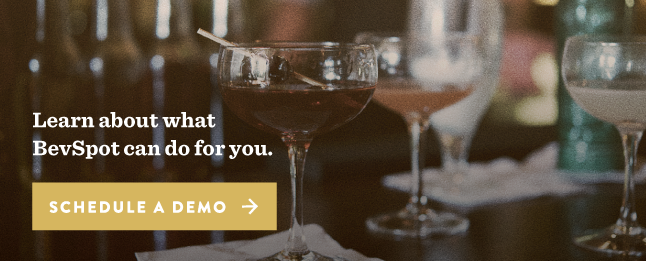
Staffing a Bar: 5 Ways to Attract Top Talent
Attracting great talent is a hallmark of a great establishment.
With high turnover rates being a persistent challenge within the food and beverage industry, it can be a struggle for bar managers and owners to find and hold onto top talent when staffing a bar. But every bar has its own unique character and draw, and for an industry professional, the appeal of working at a gritty dive bar is simply not the same as that of a cosmopolitan hotel bar.
Here are 5 ways to attract top talent to your bar’s staff, regardless of the establishment:
1. Be active in shaping the culture
One of the worst things a bar manager or owner can do is have a Field of Dreams mentality. Just because you’ve built a cool and hip bar, doesn’t mean the best talent will come out to fill it. (Unless you’re Kevin Costner.)
It is the responsibility of owners and managers to clearly define the vision of the establishment. While you don’t necessarily need a mission statement plastered on your wall, you should be directly crafting your bar’s reputation within the community through a selective hiring process and consistent brand messaging to your guests.
2. Be direct and transparent with expectations
The hospitality industry is constantly changing, but your expectations for your employees’ performance shouldn’t. Vincent Woo, Owner/Manager of the award-winning restaurant You You Japanese Bistro, explained to us that a clearly defined system for division of labor and steps of service is vital for establishing a stable work environment for your talent. Tools like an employee handbook or a consistent agenda for pre-service meetings can help keep everyone on the same page.
3. Celebrate your employees’ individuality
It’s plain and simple: No one likes working under a micromanager. Give your employees the freedom to showcase their individuality and take advantage of their unique perspectives. When choosing to join or stay at an establishment, veteran Boston-area bartender Johnny Allen from The Plough and Stars told us, “[Having] the freedom to express myself is always important.”
If you’ve hired and trained the right people, they shouldn’t need a line-by-line script to engage your guests appropriately. They also shouldn’t feel intimidated or uncomfortable to approach you with helpful feedback or ideas.
4. Recognize both team and individual achievements
According to the majority of industry professionals we talked to, team camaraderie is a key factor in choosing to stay at an establishment. When your team forms trust and bonds with each other, those connections can save that star team member from walking out the door after a rough service.
This strong work culture and sense of belonging needs to be actively forged by bar managers. Fulfilling team-building gestures like pre-service shoutouts for outstanding performances, or working with a bartender to feature their own personal creation on your cocktail menu can keep that star firmly on your roster.
5. Be a leader
Ultimately, it is up to the bar managers to lead by example. Being an open resource for professional support and mentorship goes a long way toward building your staff talent goals. Your reputation among your peers as a knowledgeable and dependable leader, both in your establishment and in the community, will naturally draw the best talent to you.
Want more useful bar management tips? Check out the Bar Management section on our blog! Continue to build your industry knowledge and stay ahead of the game by subscribing to the BevSpot blog below. And let us know of any talent retention tips that worked for you in the comments section!
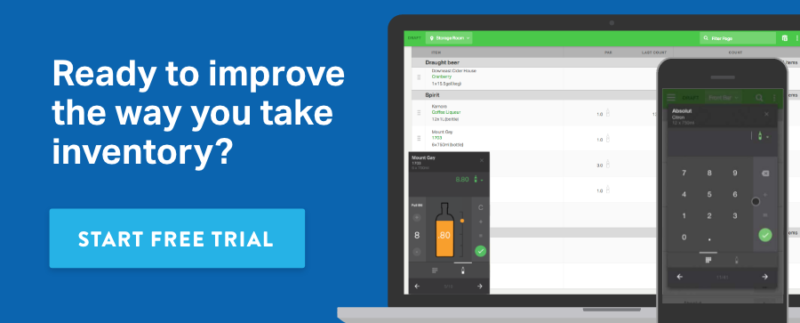
Schedule 15mins to chat with a product specialist
Start a FREE Trial Today! BevSpot offers full product education and account setup for all customers! No card Information needed!
Beverage Menu Jenga: Creating a Program That Makes Cents
Beverage industry trends can change as quickly as the weather.
And while it’s important to stay current on buzz words and customer wants, it’s easy to go overboard with the “if this is working, more is better” mindset. But this isn’t necessarily always the case. Sometimes, “more” can have a negative impact on your service and the guest experience. In order to create a beverage program that’s both popular and profitable, there are three main areas you should focus on:
Finding a Balance
Anh Mai, Owner of Prohibition Supperclub and Conservatory, an underground beer garden and food hall in Houston, knows firsthand that having a balanced beverage menu is a requirement in today’s market. This downtown hot spot quickly embraced the craft cocktail trend to a point where it became more of curse than a solution.
Prohibition originally set out to be the premier craft cocktail restaurant and bar in Houston. But when business started to get busier, they quickly realized that the very thing they were building could become a problem. Some craft cocktails were complex in the number of steps required to execute, and this became an issue when the restaurant was packed, as guests became upset by the long ticket times to get a drink.
As a bar or restaurant owner, you can either ignore the online reviews and complaints, or you can use them to make improvements to your operations. So, Anh decided it was time to balance out the bar program with another hot trend: barrel-aged cocktails.
Barrel-aged cocktails
Barrel-aged cocktails give you a signature beverage program for the simple reason that no two barrel-aged cocktails are the same. At Prohibition, they barrel-age a few signature cocktails that have added speed back into their bar’s operations:
- An Old Fashioned with Maker’s Mark, turbo ado syrup and orange bitters.
- A Bijou with Aviation Gin, Green Chartreuse, Cocchi Torino and orange bitters.
They’ve also added bottled cocktails like:
- An Irish Martinez with Red Breast 12 yr, Cocchi Torino, Maraschino Liqueur and orange and tiki bitters.
- A Bellows Negroni with Smokey Tea Vermouth, Campari and Ford’s Gin.
These subtle changes have had a big impact on Prohibition’s service, which translates to an improved guest experience. You need to balance the need to be unique and the ability to create a sustainable beverage program for your volume.
And to do this, it also helps to drop the ego. Being creative for the purpose of just being creative, without taking into account profitability, is a losing battle. You would have better odds booking a round-trip ticket on the Titanic.
Reading Minds
Predicting beverage industry trends is not as easy as it seems. Sometimes, it’s just random luck and a few well-placed social media posts that happen to go viral that launch the next big thing. Many restaurant and bar owners think they know exactly what their guests want. But often, that is foolish pride talking, and it begins with the statement, “I know this will work. I know what my customers want.”
The only way to truly know what your guests want is to ask them—it’s really that simple. However, getting past pride and thinking you know best is the quicksand trap that many fall into.
Market research is simple—just ask. You can talk face-to-face with your guests or offer an online survey using a tool like Survey Monkey. These survey platforms allow you to text or email a link to your customers, which can quickly be used to gather real data that can help you make better decisions. That’s the secret: get real data.
Execution is Everything
If you cannot be consistent with your beverage menu, you’ll be struggling with online reviews. The first telltale sign of consistency issues is the rollercoaster of good and bad reviews—one day they love you and the next they hate you. Consistency in your standards is the cure for that. Having five bartenders who all make your signature martini differently is not the way to win over guests.
When it comes to finding a balance between standing out in a crowded market and being able to execute consistently to create raving fans, menu Jenga is real. You’ll need to talk to your guests, study the valuable data that lies in your POS system (and in BevSpot!), and stay close to current trends to capture market share that will allow you to keep you bar filled while being profitable.
Check out this post for some tips on designing a successful bar menu.
Schedule 15mins to chat with a product specialist
Start a FREE Trial Today! BevSpot offers full product education and account setup for all customers! No card Information needed!
How to Calculate Your Actual Beverage Cost
Your pour cost might look good on paper, but we don’t live in a perfect world.
In an ideal bar management situation, the amount of product you sell during a given period of time and the amount of product you use during that same period would line up exactly. But no product is ever as profitable as you think it will be.
In reality, every bar has to deal with theft, over-pouring and breakage. This variance (also known as loss or shrinkage) is one of the biggest detractors from a beverage program’s profitability. And at the very root of a program’s profitability is the quality and granularity of its weekly bar inventory.
To calculate your actual pour cost, you should always factor in variance. Since loss directly increases your pour costs, you should consider anticipated shrinkage in your pricing to create a cushion.
If you want to go by industry averages, shrinkage hovers around 20%. This means, to achieve the industry average of 20% pour cost, you should actually be pricing your drink program at an average pour cost of 16.67% to make up for expected variance.
Example
Let’s say the BevSpot Bar spends $1.00 on every beer. In a perfect world, we could sell our beers for $5.00 each for a 20% beverage cost and an 80% profit. However, if we want this to work in the real world, we need to factor in variance.
Based on the average industry variance, we should assume that for every five beers we purchase, we’ll lose one. This means, we’ll spend $5.00 for five beers but only sell four beers for $20.00, making our total profit $15.00 or 67%. To make up for this anticipated loss, we should increase our beer price by 20% (in this case, $1.00) to ensure we achieve a 20% pour cost and an 80% profit.
Although this is a specific itemized example, remember that our average pour cost of 16.67% is an average, meaning it probably wouldn’t work to price all our drinks exactly at 16.67%. To determine the best pour cost average per category, we have to incorporate how BevSpot Bar’s sales fall into different product categories.
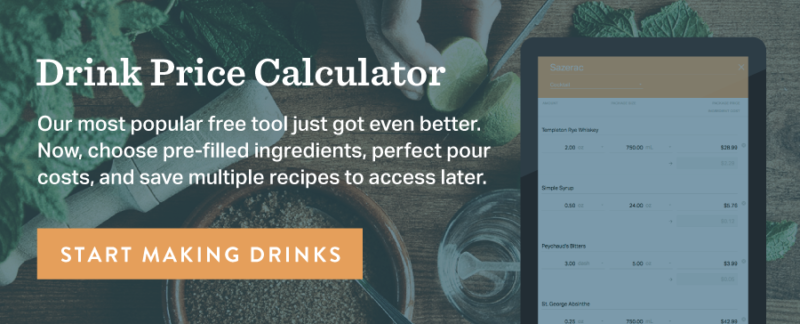
Also, just because the average industry loss is 20%, it doesn’t mean the same is true for your bar; to get more specific, you can calculate your bar’s personal product variance.
If your bar has less loss than average, you’ll be able to keep your drink prices down and still retain a 20% pour cost. This will give you an edge on the competition.
If your bar has more loss than average, try to avoid increasing your drink prices. Instead, you should take these 11 steps to reduce your variance in other ways than higher pricing.
Conclusion
No one wants to be that person who’s scratching their head at the end of the month wondering why their numbers don’t match up. In order to actually see an average 20% pour cost across your beverage program, make sure you factor in expected variance.
Schedule a call with one of our product specialists to find out how we can help.
Start a FREE Trial Today! BevSpot offers full product education and account setup for all customers! No card Information needed!
An Interview With New York Beverage Director, Ted Kilpatrick
On how he manages three New York City bars at once.
Covina Bar, Restaurant and Cafe opened in March of 2016, in the Park South Hotel in Manhattan. It’s a new-American concept, joining the group of successful restaurants owned by James Beard award-winning chef, Tim Cushman and his wife, Nancy Cushman.
Together, they have already accomplished a lot: launching their hit modern sushi restaurant, o ya, with locations in New York City and Boston; their funky Japanese tavern, Hojoko, also in Boston; and one of New York City’s most popular spots to watch the skyline, Roof at Park South.
For the launch of Covina, Tim and Nancy created a menu inspired by Chef Tim’s travels to Mediterranean coastal regions, while the style of cooking on an open wood fire stems from his culinary upbringing in Southern California. The restaurant menu is impressive, with a good selection of sharing plates, homemade pasta and pizza.
The bar at Covina is “hospitality first,” employing the same approaches and techniques as some of the best cocktail bars in the city, “without taking themselves too seriously.” It’s a beautiful space, with an extensive beverage menu that’s sure to please any guest.

Ted Kilpatrick is the Director of Beverage and Service for Tim and Nancy’s Cushman Concepts group, where he oversees the beverage programs at their three New York City venues.
With award-winning food and a loyal customer following, the bars at these three locations are always busy, requiring significant attention and management. How does Ted control all three spots at once? The people over at ShakeStir wanted to know, so they recently interviewed him to find out how he does it. This interview originally appeared on ShakeStir.com.
“I do inventory once a week, which means I do three inventories once a week. I’ve done inventories that can take 8 to 10 hours. For just one inventory in a single hotel, costing and ordering can take me 6 hours plus, but now, I can do inventory with people who have never seen these bottles before. BevSpot enables them to just type in the name of the bottle and then the information gets entered in real time. This releases the monotony of transposing from handwritten to online. And, in addition—and this is maybe the easiest part—there’s a smart cart that populates and automatically sends the orders to all your distributors.”
Kilpatrick added, “I can now do it [ordering] in 30 seconds; as soon as my inventory is done, I see the orders and have them placed less than a minute after inventory is finished. Or, I can start it one night, finish it the next morning, figure out costs, identify each bottle, and BevSpot produces a report, zips it out, and puts out a purchase order that I can send to our receiver and accountant to make sure that we are all on the same page.”
He says, “I can call them [BevSpot] and get a real person on the phone and ask for help, such as assistance creating categories for sake and wine, etc. Within a day, it’s in there for me. They’re growing at a speed that lets them remain very customer reachable and customer-service focused.”
Read the full interview on ShakeStir’s website.
Looking for more articles on BevSpot’s best customers? Check out this one with Ryan Lotz, Bar Manager at No. 9 Park (now at Bar Mezzana), and subscribe to the blog for more.

Free eBook: The Ultimate Guide to Marketing Your Bar
Download your copy of BevSpot’s new eBook now.
There are aspects of managing a bar or restaurant that demand significant time and attention—endless bottle counts, calling your reps to place orders, and analyzing your profit and loss reports are just a few. And, of course, these are important parts of running a successful bar or restaurant.
But often, when we’re focusing on these jobs, the seemingly less important things get pushed aside—things like online marketing for your business. But you know what? Neglecting your online presence could do just as much damage to your bar’s profitability as an incorrectly counted inventory.
Marketing your bar online will help you build your digital brand and presence, attract more customers, and delight the ones you have to encourage their return.
Starting this online marketing program isn’t hard. All you need is dedicated time and some help along the way.
BevSpot’s first, second and third eBooks discussed the essential parts of bar management and the steps to running a more profitable beverage program.
Now, for our fourth, we’re stepping out from behind the bar and exploring another issue that will help you run a better business: marketing your bar or restaurant online.
What will you learn in this eBook?
- How to advertise your bar or restaurant online
- How to start a customer email program
- Social media and PR for your restaurant or bar
- Essential features to have on your website
- How to start an industry blog
BevSpot Named #5 Best Place to Work in Boston
At BevSpot, we believe the growth of our team is just as important as the growth of our product. A thriving company culture and transparent leadership team is the key to our success, and last week, we learned that we’ve been doing something right.
We’re honored to announce that BevSpot was named the fifth best company to work for in Boston by the Boston Business Journal, under the small company category (50-99 employees in MA). And we could not be more excited about this achievement.
Winners for the Best Places to Work Awards are decided based on the results of an anonymous Quantum Workplace survey administered to all employees. With questions about work-life balance, culture, benefits and leadership, we came out on top (well, fifth from the top, to be exact). The rankings were announced last Thursday at an awards ceremony at Boston’s Symphony Hall. Being that this was the first year we qualified for the running, we couldn’t be happier with these results.

Our employees love the cold brew coffee on tap, the rotating craft beer kegerator, bi-weekly happy hours, catered Friday lunches and unlimited paid vacation time. Seeing such extreme growth over the past year, we’ve successfully maintained focus on what matters most—our team—and we’ve even managed to keep some of our early-day traditions alive (as homage to the small bell our sales team of two rang when demos were booked, we now bang a traditional gong every time we acquire a new customer. Sometimes, it wakes you up more than the cold brew!)
But what matters most is that we’re all in this together, working toward the common goal of changing the way the entire hospitality industry operates, an energy that is palpable in the office on a daily basis. We want to make sure it’s a fun ride for everyone involved, and being as young as we are, there’s nowhere to go but onwards and upwards.
P.S. We’re hiring!
Why is Staff Turnover in the Hospitality Industry So High?
How to prevent it in your bar or restaurant.
You might have noticed it’s getting harder to find staff in today’s market. Maybe, like the fishing industry, bars and restaurants have depleted some of their resources. Some industry professionals believe this is the case; others disagree. But, like any resource, hospitality employees must be protected, and plans should be implemented to make sure they remain a sustainable resource.
Over the years, the hospitality industry has received a bad reputation for high turnover and a shallow talent pool. Why is this? Most establishments will be quick to say it’s not their fault, it’s the other restaurants out there that are careless in their management practices.
Well, let’s see if our industry’s practices truly are part of the solution, or part of the problem.
As a bar or restaurant owner, do you:
- Pay higher wages than others in your market? If you’re on the lower end of compensation, you tend to get the lower talent.
- Promote from within? Without a chance for growth and opportunity, people become disengaged at work and will seek opportunity elsewhere. This contributes to the growing pattern of job hopping in the industry.
- Have a thorough training program? A great training program is more than just initial job training. Restaurants with rigorous training programs understand that learning and improvement is continuous—school is never out for the professional.
In the same way that you carefully craft your brand, you need to craft your culture in a way that attracts top talent, especially if you are to stand out in a crowded market.
First impressions go both ways—you might judge an applicant by their appearance and other clues before you even look at their resume, and you can bet that potential employee is also judging you by your demeanor and the atmosphere and physical condition of your restaurant.
The question really boils down to this: have you created a restaurant that people want to work at?
What you need to do is create an environment that attracts top talent.
Here are some ways to start:
- Do an objective walk-through of your restaurant. Are there any walls that need touch-up paint? Any furniture or kitchen equipment that needs to be either repaired or replaced? If you want to hire people that pay attention to the details, you have to be the first one.
- Get creative in your job advertisements. The number one mistake most restaurants and bars make when trying to hire is that they publish an ad that is nothing more than a simple job description. Being creative sets you apart from all the other restaurants in your market trying desperately to fill the same positions. Advertising for a dishwasher might get you one or two responses. Advertising a job for a Ceramic Aquatic Technician might seem a little silly, but you will definitely get some inquiries. When posting your job ads, you want to adopt the same mindset as marketing—sometimes, what you say takes a backseat to how you say it.
- Lastly, you must become a mirror for the type of talent you’re looking for. If you want a team with integrity and honesty, you need to be a leader with integrity and honesty. If you want a team with high energy, you need to set the tone with high energy, every single day.
If we are to make this industry appealing to the younger generations, we need to develop and maintain a professional perception of the industry. Reality TV shows have tainted our image. But we all know that chefs yelling and screaming at staff is very rare in the real world. Most owners, managers and chefs are good people, it’s just that the bad ones get more press.
The best thing to do is set the bar high for yourself, first. You have to raise your standards. You have to expect more from yourself than you do from others. When you step up to be the leader they expect, you’ll see the culture turn around. Soon, you’ll start to see the quality of applicants raise and you’ll find your business attracting (and retaining) top industry talent.
Schedule 15mins to chat with a product specialist
Start a FREE Trial Today! BevSpot offers full product education and account setup for all customers! No card Information needed!
The Best Cocktail Brunch in New York City
One thing is for sure—New Yorkers love their boozy brunch.
Stemming from the dedicated day drinkers who had access to alcohol during Prohibition, brunch is just as much about cocktails as it is food. In fact, brunch is said to have launched cocktails like the Mimosa and the Bloody Mary, and it’s credited to spreading the now-familiar practice of mixing alcohol with juices and other non-alcoholic drinks, like coffee.
With such high demand for excellent cocktails paired with great breakfast dishes, now, hundreds of bars and restaurants offer bottomless brunch in New York City. Considering there are so many options to choose from, the BevSpot team decided to put together our picks for the 10 best cocktail brunches in the Big Apple.
The Maya
Looking for unlimited modern Mexican small plates and free flowing brunch cocktails? Look no further than The Maya. Inspired by local Tequilerias in Mexico, The Maya features small plates like tacos, baked eggs and Mahi-Mahi ceviche. Customers can also choose between eight handcrafted cocktails, including different variations of Margaritas, Bloody Marys, Mimosas and Sangria. Rooted in tradition but also venturing into contemporary tastes, The Maya is a great concept for patrons looking to get their buzz on at bottomless brunch and seek out authentic Latin cuisine.
When: Saturday and Sunday, 11:30am to 4:30pm
Where: 1191 1st Avenue, New York, NY 10065
Price: $45 bottomless (two hours)
Tanner Smith’s
Named after a famous mobster, Tanner Smith’s dimly lit interior, exposed brick and nine bourbon barrels hanging from the wall has Prohibition written all over it.
Tanner Smith’s is one of BevSpot’s favorite New York customers, serving a tipsy-tea-themed brunch that attracts a bustling weekend crowd. As a tribute to the “tea rooms” of Prohibition, drinks are served in teacups to be disguised as legal beverages. Accompanied by live swing or jazz music and a DJ during the later hours, this chic tea party features a range of tea-infused cocktails and exquisite brunch offerings that are sure to start your weekend off right.
When: Saturday and Sunday, 11:30am to 2:30pm
Where: 204 W 55th St, New York, NY 10019
Price: $40 includes one entree and one teapot (two servings) or two individual cocktails, glasses of wine or pints of beer.
Calle Ocho
This lively Latin joint is well known for its unlimited Sangria bar and delectable Spanish dishes. Calle Ocho’s drink menu includes eight different kinds of Sangria, with flavors ranging from banana and coconut to cinnamon and peach—but here’s a heads up: these drinks are strong. Calle Ocho also has a great selection of Latin brunch foods like Gallitos and Torta de Pollo. It’s popular, so be sure to book reservations in advance.
When: Saturday and Sunday, 12:00pm to 3:00pm
Where: 45 W 81st Street, in the Excelsior Hotel, New York, NY 10024
Price: $19-$33, unlimited sangria included (two hours)
Agave
As you walk down Seventh Avenue, you can’t miss Agave. This establishment has two outdoor patios, an enclosed porch area, a bar, a dining room and a tequila room, making it great for larger parties. With two hours to enjoy bottomless Mimosas, wine, or their famous frozen Margaritas with any egg item, seats go fast. But even if it’s jam packed, Agave maintains a relaxed atmosphere and staff members are quick to top off customers’ drinks.
When: Saturday and Sunday, 11:00am to 3:00pm
Where: 140 7th Ave S, New York, NY 10014
Price: $32.99 bottomless (two hours)
Poco
Poco’s brunch is always buzzing. Well known for their large party accommodations, the place is jam-packed with a lively crowd that usually overflows into the basement area. As you enter, you’ll hear music bumping and see waiters whizzing around with huge drink pitchers. Browse their menu, and choose between a mix of Spanish-inspired dishes and traditional brunch items, plus a choice of unlimited Bloody Marys, Sangria or Mimosas.
When: Friday, Saturday, Sunday, 11:00am to 5:00pm
Where: 33 Avenue B, New York, NY 10009
Price: Cash only, regular party $30 bottomless (1.5 hours), party of 20 or more $41 (three hours)
Essex
With a large, bright interior draped in sunshine, Essex is stunning. This two-level, warehouse-like establishment serves New American food with a Jewish influence, offering dishes like Essex potato pancakes and matzo. Although their brunch is no longer bottomless, you can certainly get a good buzz with their fixed brunch menu that includes a choice of three Bloody Marys, Screwdrivers or Mimosas.
When: Saturday, 11:00am to 4:30pm, and Sunday, 11:00am to 7:00pm
Where: 120 Essex Street, New York, NY 10002
Price: $25.95 fixed price for entree and three brunch cocktails, $39.95 for parties of eight or more
Pardon My French
Casimir recently closed its doors to make way for this new French tapas concept, Pardon My French. Under the same ownership, the space has transformed into a more modern French restaurant with bistronomy-style dishes. For brunch, PMF serves classic brunch food with a French twist, such as Crêpes de Babeurre (buttermilk pancakes with fresh fruit, maple syrup and whipped cream) and Omelette au Epinards & Tomate (omelet stuffed with spinach and tomato, served with garlic roasted potatoes). PMF also offers bottomless Bloody Marys made with house-infused horseradish vodka, or Mimosas.
When: Saturday and Sunday, 11:00am to 4:00pm
Where: 103 Ave B, New York, NY 10009
Price: $28.95 bottomless (two hours)
Blind Pig
The Blind Pig is a classic sports bar located in the East Village. When you enter the dimly lit establishment, you’ll see walls covered in flat screen TVs blaring live sports games and groups of people sipping on spicy Bloody Marys. The menu is stacked with classic dishes like eggs benedict and chicken and waffles. To make it even better, The Blind Pig offers bottomless Mimosas and Bloody Marys. However, be sure to check if there’s a major sports game on; sometimes, this bottomless deal disappears during key sports times.
When: Saturday, 11:00am to 5:00pm
Where: 233 E 14th St, New York, NY 10003
Price: $25 bottomless (two hours)
Miss Lily’s
If you’re looking to step outside New York City without too much travel, head to Miss Lily’s. With a vibrant yellow exterior, this place is hard to miss. As you enter, you’re transported to a Jamaican record store, radio station and diner—all in one. For bottomless brunch, patrons have a choice between the Hopstepper, Miss Lily’s version of a Bloody Mary made with jerk spices, and the One Love Bellini, a mix of passionfruit and champagne. They can also choose between five bottomless brunch entrees, such as Lily’s famous coconut pancakes or Jamaican rancheros.
When: Saturday and Sunday, 11:00am to 5:00pm
Where: 132 W Houston St, New York, NY 10012
Price: $30 bottomless (two hours)
Cafe Cortadito
Cafe Cortadito, an authentic Cuban restaurant, is another great place to visit if you’re looking to explore international food. With a focus on old world Cuban cuisine (with a modern twist), customers can enjoy hearty dishes like cubanito, vaca frita or camarones enchilados. Bottomless brunch here also includes a wide variety of brunch cocktails like tropical Mimosas, red or white Sangria, champagne Mojitos, champagne Margaritas, Bloody Marys and house beer.
When: Friday, Saturday, Sunday, 11:30am to 6:00pm
Where: 210 E. 3rd St, New York, NY 10009
Price: $29.95 bottomless (1.5 hours)
Whether you live in NYC or you’re planning a visit, a trip to one of these 10 brunch spots should be on your list. With a steady flow of handcrafted cocktails and a mix of scrumptious brunch foods, you’ll be sure to leave with a nice buzz and a satisfied stomach.
Making brunch at home? Download our free craft cocktails recipe book, with cocktail recipes from some of Boston’s best bartenders.
